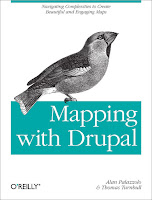Bouba Mal Yaya is a herdsman from the Fulani-Mbororo peoples in Chad. Along with his fellow herders, he had been expecting good grazing for his cattle this year but this has not been the case.
He is confused and frustrated. He had always been able to rely on his people’s age-old knowledge of their ecosystem to sustainably manage grazing. This traditional knowledge has been used by his people to develop strategies to cope with seasonal weather patterns and manage their meagre resources.
The community has typically looked to the elders for predictions on rainfall distribution, drought and other seasonal patterns. Now, it would appear that the reliability of their prediction is undermined by increasingly unpredictable weather and climate conditions. Their livelihoods and future as a culture are under threat.
The cause? Climate change.
Mbororo herders travel over great distances to graze their livestock. The impact of climate change has reduced the capacity of their traditional grazing lands with droughts and dwindling resources pushing them to herd their livestock further afield.
Some have lost their stock and have been forced to change their way of life, becoming semi-nomadic or sedentary. These lifestyle changes are not easy, and the pastoralists experience extreme hardship and loss of culture. The decreasing reliability of the elders’ predictions has had an impact on their trustworthiness within the community, further destabilising life for these people.
The situation is frustrating for everyone involved, especially considering that information which could help the pastoralists maintain their traditional way of life is already at hand. Climate change experts use modern monitoring and forecasting systems to generate a vast amount of information on past, present and future climate scenarios at international, regional and national scales.
The difficulty arises in communicating this information to grassroots level in a language that the people understand and that takes account of their traditional knowledge, prediction methods and existing local approaches to decision-making.
In a bid to adapt to the changing conditions and maintain their customary way of life, the Mbororo peoples are coming together with other pastoralists, meteorologists and African policy makers.
They share information relating to traditional and scientific knowledge and outline their needs. They also look at how to improve the exchange of data, knowledge and information needed to improve policy making to boost resilience to climate change at grassroots level.
Thanks to the contributions of the pastoralists, climate change experts are developing a greater understanding of traditional knowledge. This will enable them to package their information in a more manageable and user friendly way for the local community.
By making use of innovative information and communications technologies and participatory mapping techniques pastoralists hope to provide scientists with valuable insights into local weather and climate patterns and reporting on the impact of climate change. This essential data will enrich the information base available for research and analysis, ultimately developing more nuanced and locally accurate weather forecasts.
This data can then be used by the pastoralists to adapt as necessary to the changing conditions without having to abandon their way of life. Involving indigenous communities like the Mbororo in this process also paves the way for the creation of inclusive and more successful policy.
National Adaptation Programmes of Action (NAPAs) for climate change will have greater value if they recognise the authoritative nature of traditional knowledge.
As part of this process, a meeting was hosted in November 2011 by the Indigenous Peoples of Africa Co-ordinating Committee (IPACC), the Association des Femmes Peules Autochtones du Tchad (AFPAT) and the Technical Centre for Agricultural and Rural Cooperation ACP-EU (CTA). At the meeting, indigenous people’s representatives from Chad, Niger, Kenya, Namibia and South Africa gathered with meteorologists to discuss these concerns.
In particular, they looked at how traditional knowledge of pastoralism and atmospheric science can be combined to respond to climate change risks. Their findings reinforced the need for both groups to work together to share information, data and knowledge, tackling the climate change issue together.
In follow up to the meeting, a participatory mapping exercise will take place on the edge of Lake Chad in the spring of 2012. By coming together with the experts and policy makers to build a Participatory 3-D model (P3DM) of their land, the two communities aim to bridge the gap between traditional contributions to the understanding of climate change on a local scale and scientific approaches to the challenge involving everyone in this activity.
This is a first for the pastoralist and scientific community. Neither group can solve the climate change problem alone. Together they can make a lasting difference for science and for a traditional way of life.
Read more:


